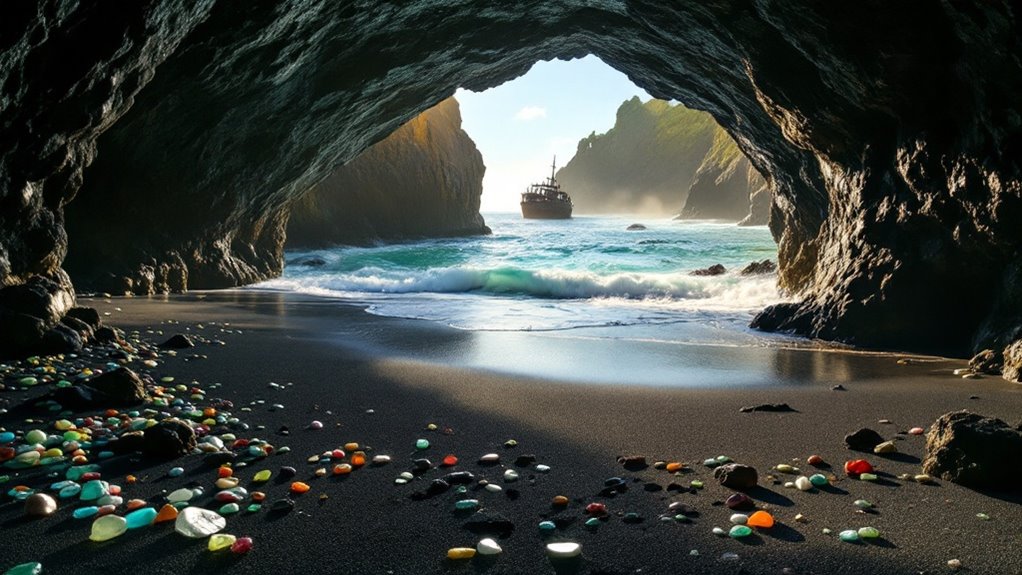Travel experts often choose extraordinary beaches over famous shores because these locations offer unique geological features, such as Iceland’s black sands or Hawaii’s green olivine crystals, and provide seclusion unavailable at crowded tourist destinations. Access to places like Benagil Cave in Portugal or Dry Tortugas in Florida is limited, helping preserve their natural state and tranquility. Many sites, such as Giant’s Causeway, hold significant environmental or cultural importance, offering distinct experiences unavailable at mainstream beaches. More detailed examples illustrate these differences further.
From black volcanic sands to secluded coves accessible only by boat, extraordinary beaches around the world display a remarkable diversity of natural features, geological formations, and environmental significance. Travel experts often bypass the predictable crowds of famous shores in favor of these unique destinations, each offering attributes rarely found elsewhere.
For instance, Vik Beach in Iceland is notable for its black sands and striking volcanic backdrop, a result of centuries of geological activity. Likewise, Papakōlea Green Sand Beach in Hawaii stands as one of the few places globally where olivine crystals give the sand a distinctive green hue, reflecting the island’s volcanic origins. Hidden beaches in Puerto Rico such as Playa Escondida provide a tranquil escape and natural beauty near El Yunque National Park.
Some beaches are celebrated for features shaped by both natural forces and human impact. Glass Beach in California, once a city dump, is now covered with smooth, colorful pebbles formed from weathered glass, demonstrating how nature can reclaim and transform even polluted environments.
Glass Beach in California showcases nature’s ability to reclaim pollution, transforming discarded glass into vibrant, wave-polished pebbles along the shore.
In Northern Ireland, the Giant’s Causeway is recognized as a UNESCO World Heritage site due to its thousands of interlocking basalt columns, which resulted from ancient volcanic eruptions and are steeped in local mythology. The unique geological landscape of the Giant’s Causeway draws visitors interested in exploring one-of-a-kind coastal formations.
Accessibility also distinguishes these beaches from more conventional destinations. Benagil Cave Beach in Portugal and Playa del Amor in Mexico are accessible only by boat, creating exclusive experiences and limiting visitor numbers.
Navagio Beach in Greece, famous for its shipwreck, and Dry Tortugas in Florida, home to the historic Fort Jefferson, require either boat or plane travel. These logistical challenges contribute to their secluded atmospheres and help preserve their natural and historical integrity.
Environmental and cultural significance further elevate these locales. Hot Water Beach in New Zealand offers visitors the rare chance to dig into the sand and create personal hot spring pools, thanks to underground geothermal activity.
Vatersay Beach in Scotland and Anapai Bay in New Zealand remain peaceful due to their remote locations and difficult access. Collectively, these extraordinary beaches are favored by experts for their rare geological phenomena, environmental stories, and the preservation of unique natural and cultural landscapes, making them notable alternatives to mainstream coastal destinations.





